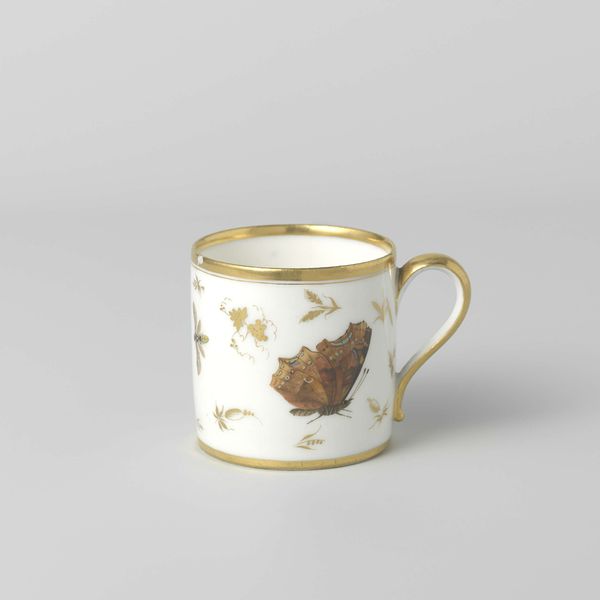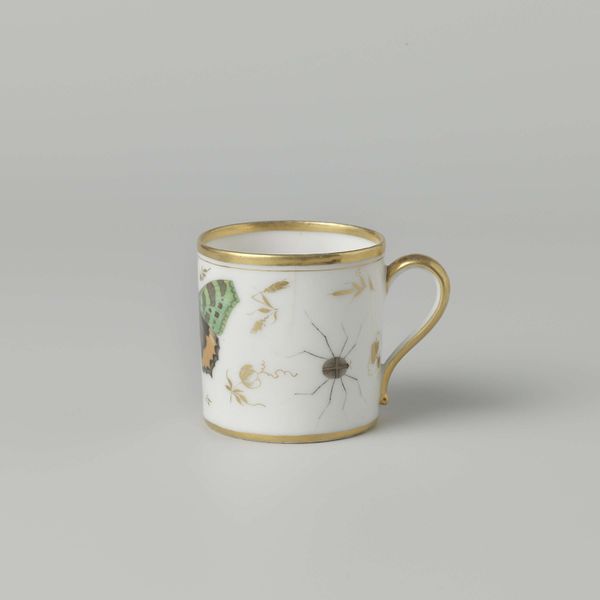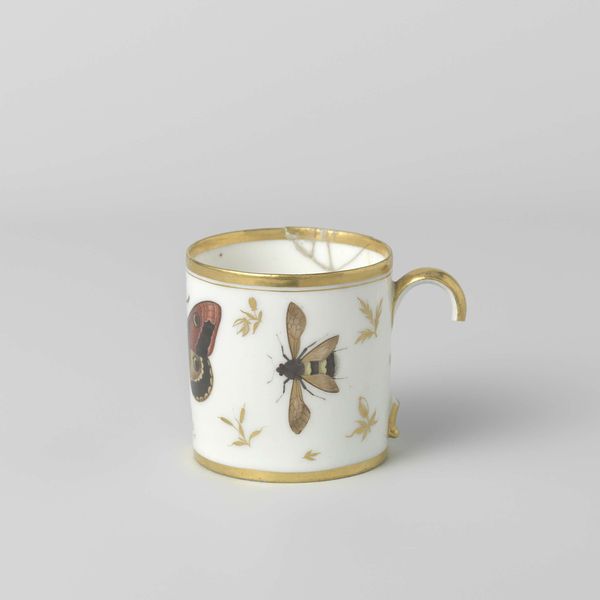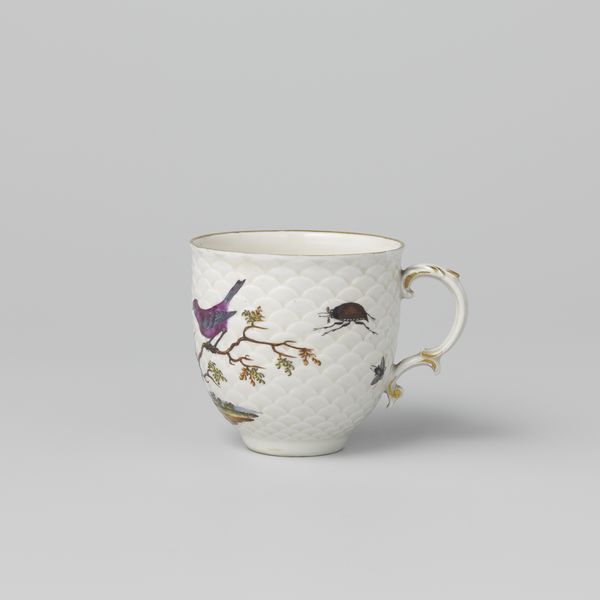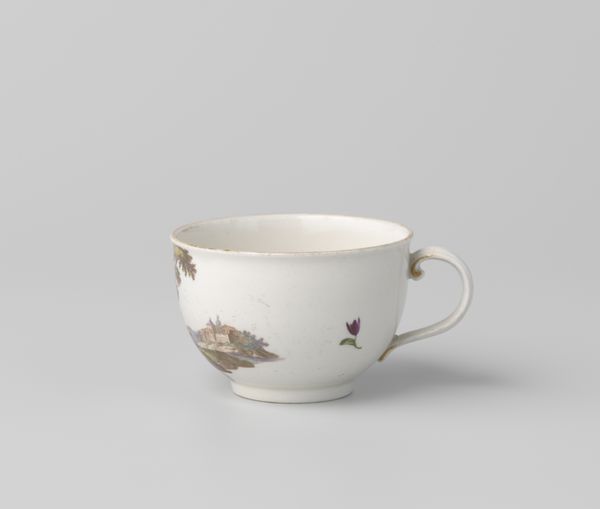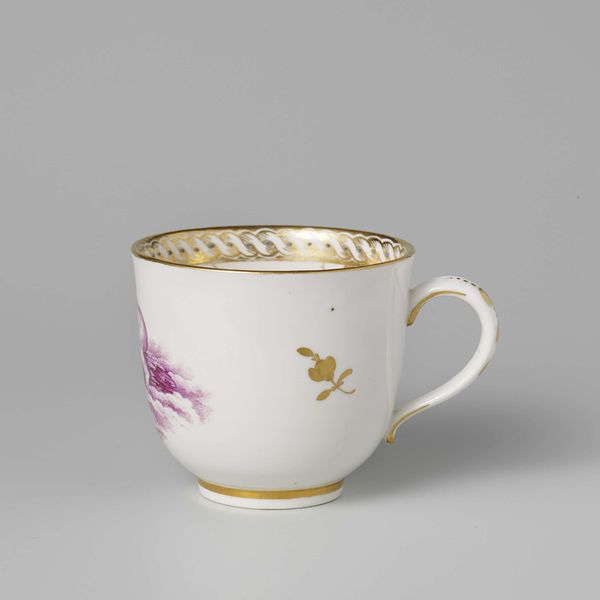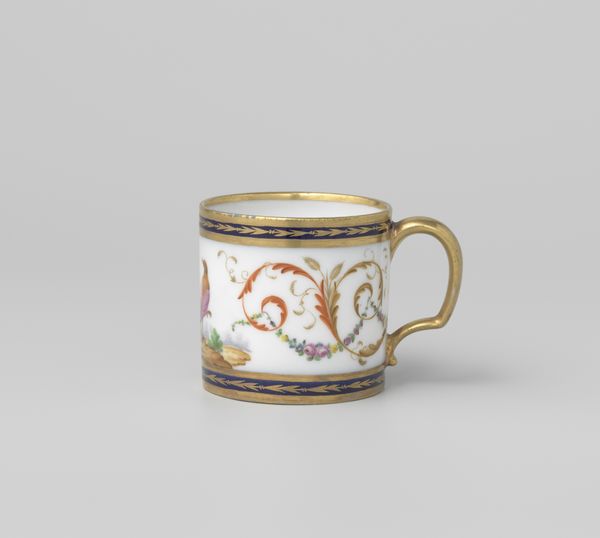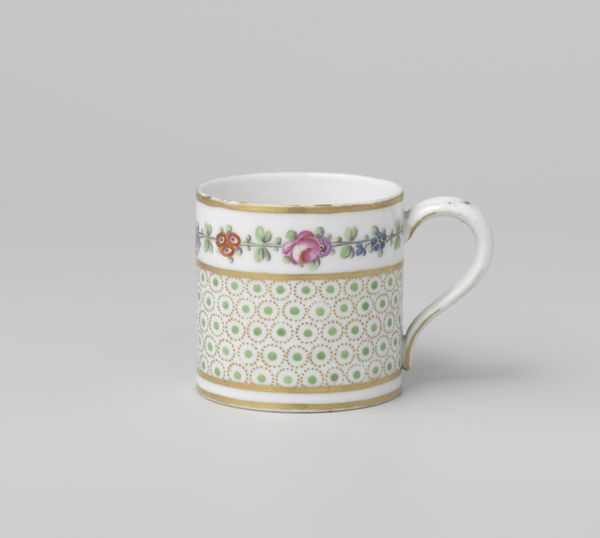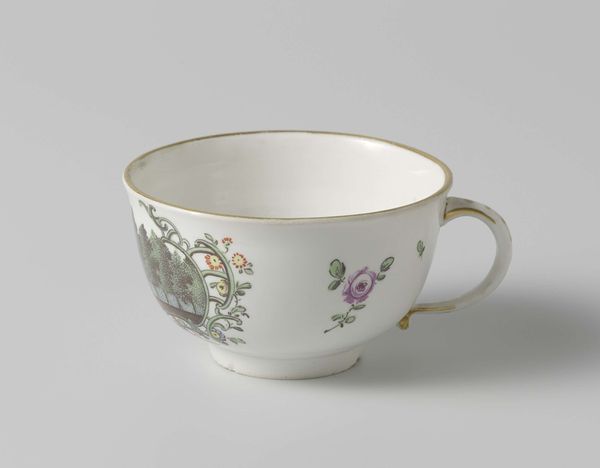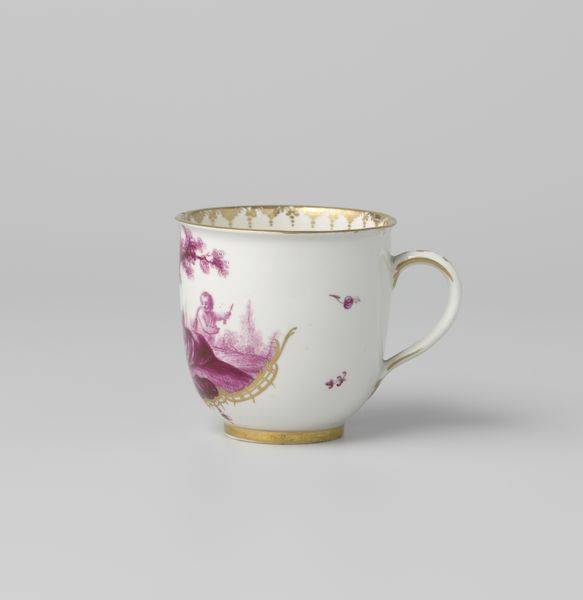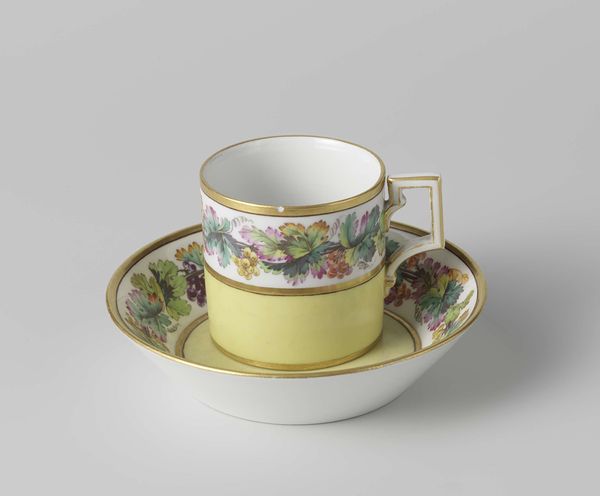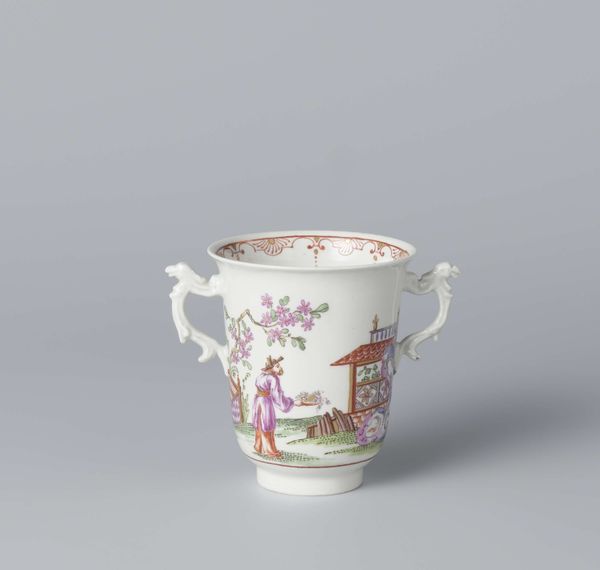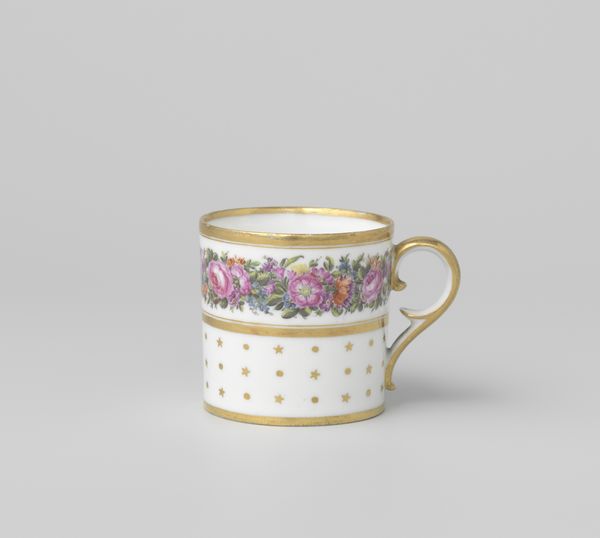
ceramic, porcelain
#
ceramic
#
porcelain
#
decorative-art
Dimensions: height 6.4 cm, diameter 6 cm, width 8.7 cm
Copyright: Rijks Museum: Open Domain
Editor: Here we have a ceramic cup with insects, flower sprays and grapevines, dating back to 1797-1798. It's a beautiful object, very delicate. All the images of nature around the surface give it a wonderful energy. What strikes you about it? Curator: The cup is stunning and seems almost an innocuous object at first glance. Yet, think about the cultural and economic contexts in which such a cup was made. Porcelain at this time was a luxury item. Its production and consumption were tied to global trade networks, colonialism, and exploitation. Editor: Oh, really? I hadn't thought of that. Curator: The delicate decoration – the insects and vines – speaks to the era's fascination with the natural world. Yet, the very act of consuming from such a delicate cup was itself a display of status. How might the symbolism of nature be interpreted? Is it purely aesthetic, or does it hint at something more? Editor: Hmm, maybe nature became a status symbol, divorced from the realities of the time? Like, the owner enjoying nature on their cup but maybe not thinking about how they got their porcelain? Curator: Exactly! And that disjunction is telling. What looks delicate is underpinned by really stark power structures. Consider also who painted it, who owned it, and who did not have access to its beauty, and ask yourself what is its political role beyond simple pleasure. Editor: That definitely makes me think about the cup in a completely new light. Thanks! Curator: Indeed! Objects like this offer fascinating portals into complex histories of trade, power, and representation.
Comments
No comments
Be the first to comment and join the conversation on the ultimate creative platform.
